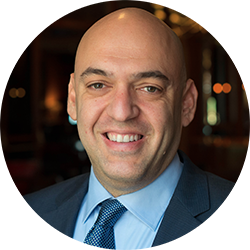Money laundering is one of the least understood federal crimes. That ignorance can come with a heavy price. As a criminal defense lawyer in Los Angeles, I know that it can be shockingly easy to violate federal money laundering laws.
A recent case out of the federal court in Santa Anashows how money laundering prosecutions unfold.
The primary actor in this saga is Chad Peter Smanjak from Long Beach, California. He pled guilty to securities fraud charges involving the shares of a sport and nutrition company headed by Daniel E. Ruettiger. If that name doesn’t ring a bell, you may have heard of Ruettinger under a different name—Rudy.
Ruettiger was the pint-size player who won the hearts of [Notre Dame] Fighting Irish fans in the 1970s by walking on to the then-dominant football team. His story inspired the 1993 film “Rudy.”
Ruettiger served as the CEO of Rudy Nutrition, which prosecutors said “purported to sell health-conscious beverages as an alternative to high-sugar soda and sports drinks.”
But the venture attracted the attention of the Securities and Exchange Commission, and in 2008, the agency revoked the registration of each class of registered securities of Rudy Nutrition for failure to make required periodic filings with the commission.
In December 2011, the agency filed a complaint against Ruettiger and 12 others based upon the Rudy Nutrition scheme.
That same month, Ruettiger agreed to pay federal regulators $382,866 to settle claims that he and 12 others crafted the stock scheme related to the now-defunct sports drink company. He did not admit or deny the allegations.
Smanjak pled guilty to using Rudy’s name to drive up the price of the stock and then dump the stock on the market—at a substantial profit. This maneuver, which is often called a “pump and dump,” is reported to have generated 5 million dollars in profits.
So what do you do with that kind of money? You can’t just put in a mattress, and it’s tempting to move that money, or at least part of it, so it will be harder to trace back to the pump and dump scheme.
That’s where money laundering comes into play.
In 1986, Congress passed the Money Laundering Control Act, which specifically makes it a crime to move money with the intent of hiding the results of a broad range of criminal activities. Under 18 U.S.C. Section 1856, the key element of money laundering is making a transaction with the intent to conceal the source, ownership, location, or control of funds related to criminal activity.
Although some money related crimes require the money to pass through a financial institution such as a bank before it can be money laundering, Section 1856 does not. You can violate Section 1856 just by handing money to someone with the intent to conceal its source. Moreover, under Section 1856 there is no minimum dollar threshold. So long as someone is found to have committed specific underlying crimes, any amount of money transferred with an intent to conceal can be prosecuted as money laundering.
In the case of Mr. Smanjak, prosecutors focused on the federal securities crime. Money laundering was an additional charge. Specifically, Smanjak was charged with laundering $1 million of the $5 million in profits generated by the pump and dump scheme.
This is a fairly typical way for federal prosecutors to use money laundering charges. They act as an additional penalty for someone who is already facing other charges. These penalties can, however, be severe. People convicted of violating federal money laundering statutes face both hefty fines and lengthy prison sentences. Under Section 1856, the monetary fine can be up to twice the amount of money that was laundered and the prison sentence can be as much as 20 years.
Money laundering may not sound like a very serious or dangerous crime. But with these kinds of potential penalties, make no mistake. People facing federal money laundering charges need a criminal defense attorney who knows how such cases are handled in the specific federal court in which their case will be prosecuted.

